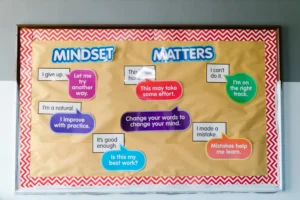Do you run a service business?
Then you know that the onboarding process is one of the most crucial steps when working with clients.
It can make or break whether you land new projects or not.
And what’s signed before you begin working together?
A business proposal.
That’s why ahead I’m going to teach you how to write a business proposal that leads will be in a hurry to sign.
Let’s get into it!
What is a business proposal?
A business proposal is a document that lays out a project’s pricing, services, and scope of work.
It is given to a client before any commitment is made to ensure that they understand the services you offer, how much they will cost, etc.
As a matter of fact, 36% of businesses that use these types of documents secure capital investment and loans versus 18% who don’t.
Furthermore, 64% of businesses successfully grow their business thanks to proposals and business plans.
This means that if you don’t use a business proposal, you’re decreasing the odds of you landing new clients, funding, etc.
Business proposals also help increase conversion rates because it gives the lead a tangible document to look over and share with their team.
They can study it, ask for changes, and then ultimately both parties end up satisfied.
If you own or work within a service company, you need to under how to write business proposals properly if you want to generate more clients.
Here’s how…
Business proposal format
Formatting a business proposal properly is key to good responses from clients.
It will make your brand appear more professional and trustworthy while helping the other party clearly understand what you’re offering.
These are some of the main factors to consider when formatting a business proposal.
Business proposal title page
The title page of a business proposal is straightforward. It should state your company’s name, the date, the client’s name, and a title for the project itself.
I recommend that you use a tool like Canva to create a professional title page. It will help improve how a potential client interprets your business.
How do you think others will think of you if the proposal looks like it was made in Microsoft Paint? Probably not very well.
Sign up for an account at Canva and customize one of their templates.
Alternatively, you can enter custom dimensions for a very precise size.
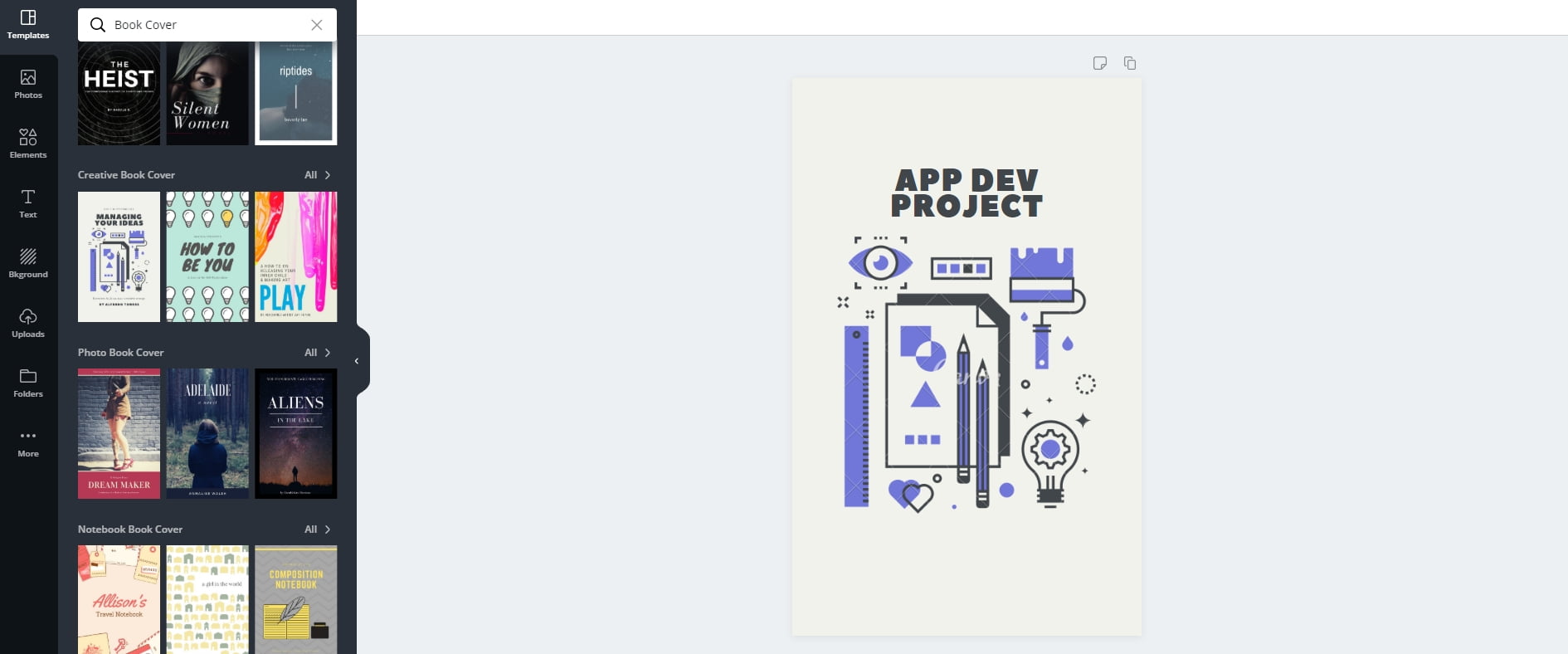
You can then add shapes, icons, text, and other elements to make it tailored to the project.
I recommend adding your logo and the client’s to make it personalized, as well.
This only takes a few minutes of work and will give a great first impression every time.
Business proposal cover letter
The cover letter of a business proposal is similar to the one you’d send in with a resume when applying for a job.
It explains who you are, your experience, and why you’d make a great fit working together.
Use the cover letter as a way to sell the project and its benefits for the client before they’ve finished the rest of the proposal. It should give them a birds-eye view of what the project entails, as well.
Here’s a business proposal cover letter template you can customize for your project:
Dear {Client name},
Thank you for your interest in working with {Your company name} to {Achieve a certain goal}. It was a pleasure speaking with you on the phone and getting to understand your company’s situation.We specialize in {Field} and help businesses {Achieve a certain goal}. I believe we’d make an excellent partnership because we’ve helped similar company’s in the past generate {Revenue numbers or other KPIs}.
The process of working with {Your company name} is simple, straightforward, and we take care of the gruntwork so you can focus on what you do best.Our process begins with {First step}. Next, we like to {Second step}. Finally, our team and I do {Third step}. This process allows us to {Elaborate on results}.
The proposal laid out ahead will cover all of the steps, results, pricing, and other information related to this project. Feel free to contact me at any time if you have any quesitons or comments.
Warm regards,
{Name}
{Company name}
{Email}
{Phone number}
Table of contents
While the cover letter will explain most of what the project proposal covers, a table of contents allows you to further organize the sections.
An electronic version of the proposal also includes hyperlinked headers meaning the reader can jump straight to parts they’re interested in.
If you’re writing business proposals in Google Drive, you can add a table of contents with the click of a button by selecting “Insert,” “Table of contents,” and choosing one of the two options.
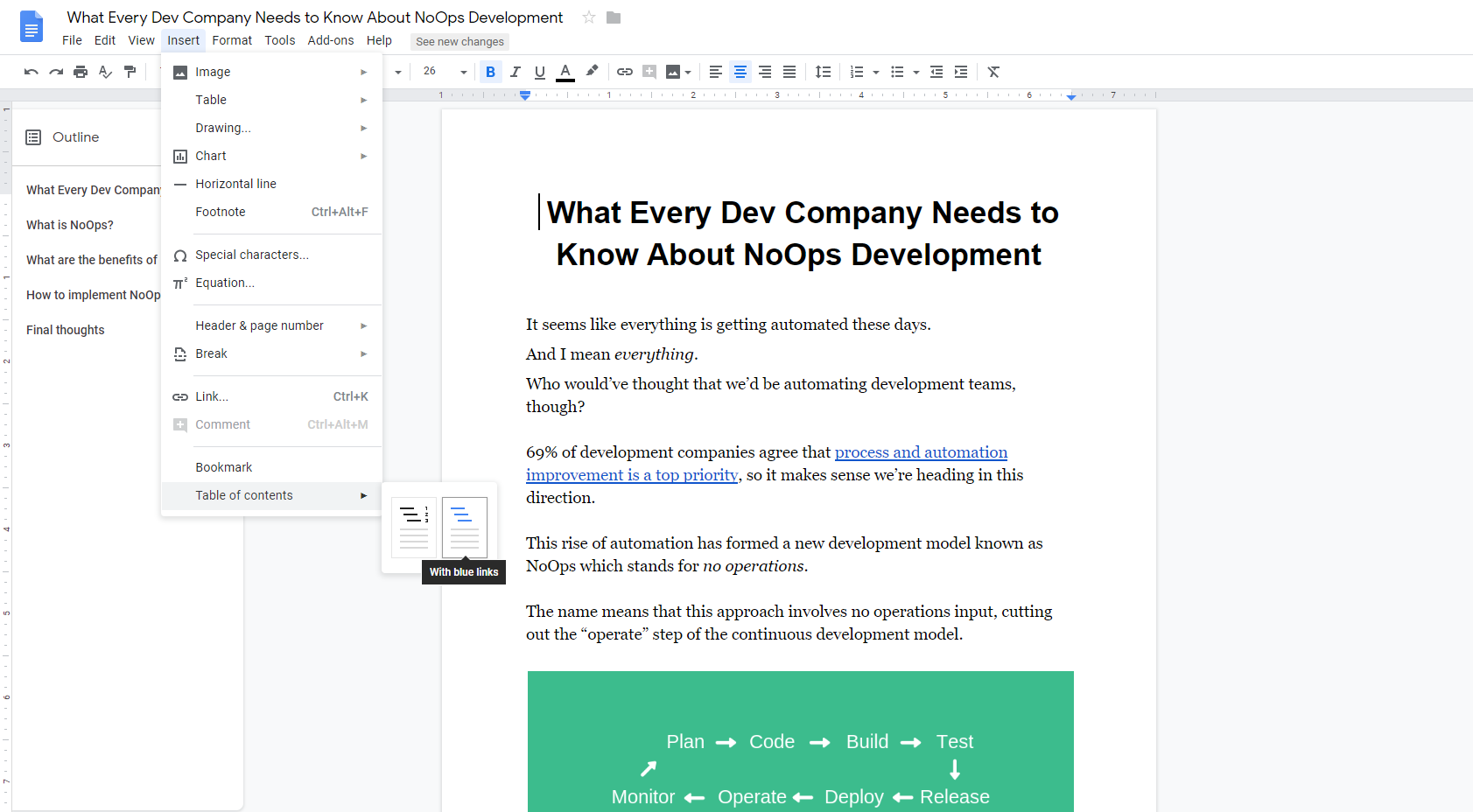
You can edit the table afterward if you wish to remove or add certain sections.
This automatically adds hyperlinked headers that brings you to the correct page upon click, so ensure you do this after you’re finished writing.
Talk about convenient!
Business proposal executive summary
The executive summary of a proposal sums up the most important elements and purpose of the proposal itself. This gives the reader a quick overview of what to expect by reading it.
This isn’t to get confused with the cover letter, however. While the cover letter may mention similar information, it’s more personal and casual while the executive summary is official.
Use it as a way to set the tone for the rest of the proposal and get the potential client excited for reading it.
I recommend including the following information in your executive summary:
- Mention the exact services you plan on offering, the steps needed to execute them, and expected results.
- Explain any problems the lead is experiencing and how you will solve them.
- What separates you from competitors and why they should choose you as a service provider.
- Opportunities that can be taken advantage of to help the client excel.
- State who runs your business and will be involved in the project.
Once you’ve completed this, you can move onto the next step.
The proposal itself
The body of the proposal is where you will detail the services you plan to offer the client, the scope of the project, expected deadlines, and forecasted results.
This is the most important section since it’s why you’re in contact begin with.
I suggest that you apply the marketing formula called pain, agitate, solve while writing proposals.
This is commonly used in copywriting but can be applied to practically any business material.
It involves addressing the pain point of a customer, agitating it to bring out emotions, and positioning your service as the solution.
Begin by addressing the client’s pain point and elaborating on the issues it’s causing.
For example, let’s say that you offer web design services.
You can state that it can be a struggle to create a responsive and optimized website. However, without one, you lose organic traffic, brand presence, and leads.
This creates an emotional response and shows that you understand their situation.
Then you come in like a knight in shining armor stating how your services will help them solve all of these problems and more at once.
Bonus points if you can cite previous case studies and results you’ve generated for other companies. This will greatly help increase conversion rates.
Make sure to read my guide on how to write a case study with that being said.
Pricing
This is the section where you will want to break down the pricing of the services you’re offering and any packages if available.
It’s wise to position pricing as an investment for the client. This way it isn’t looked at as an expense, but rather money spent wisely which will generate further revenue later.
This is especially important if your services directly help a client increase revenue, sales, etc.
Showing ROI is a big game-changer here, too.
Remember, budget and allocating money is a serious part of business. Clients want to ensure that theirs is spent carefully.
For example, my friend Zack over at Profitable Ads helped one of his PPC clients generate $3 million in revenue with only $17,000 in ad spend!
Imagine showing that to his future leads…
They’d be practically throwing money at him!

About your company
I like including a part of the proposal that outlines the history of my company and everyone involved. Transparency and adding in the human element of seeing who you’re working with is very important in business.
Even if you operate behind a brand name and logo, showcasing founders and the individuals of different departments add clarity and shows your commitment to being open.
You can also discuss your value proposition and history in this area of a proposal.
Try to keep it as relevant as possible to the client’s situation, however. You might mention that you specialize in their specific industry, for instance.
Don’t neglect to be personal, either.
Storytelling and becoming vulnerable creates an emotional connection that can’t be faked or replicated.
Sure, your competitors could be a 99% exact match to what you do, but nobody has your story and personality. Mix that into your proposal.
Terms & conditions and signature
The last part of a business proposal is where you need to lay out the terms both parties must follow for the agreement to remain intact.
It may be wise to consult a legal professional to ensure that the terms and conditions are safe and fair.
However, there are many free terms and conditions generators and templates you can use online.
The general principles remain the same as if you were creating a contract for any other project. It should include:
- The scope of the project, how much work you will provide, deadlines, etc.
- Payment conditions and legal processes if they are not met.
- The responsibilities of both parties.
- Who owns what designs, creatives, web properties, etc.
- Non-disclosure and non-compete terms.
I recommend reading this article on how to create a bulletproof contract for all of the deets.
Continuing, here’s how to use a free tool called DocHub to requested signatures for contracts in seconds.
Step 1: Upload your contract
Begin by signing up for a free account on their homepage via email, Google, or Dropbox.
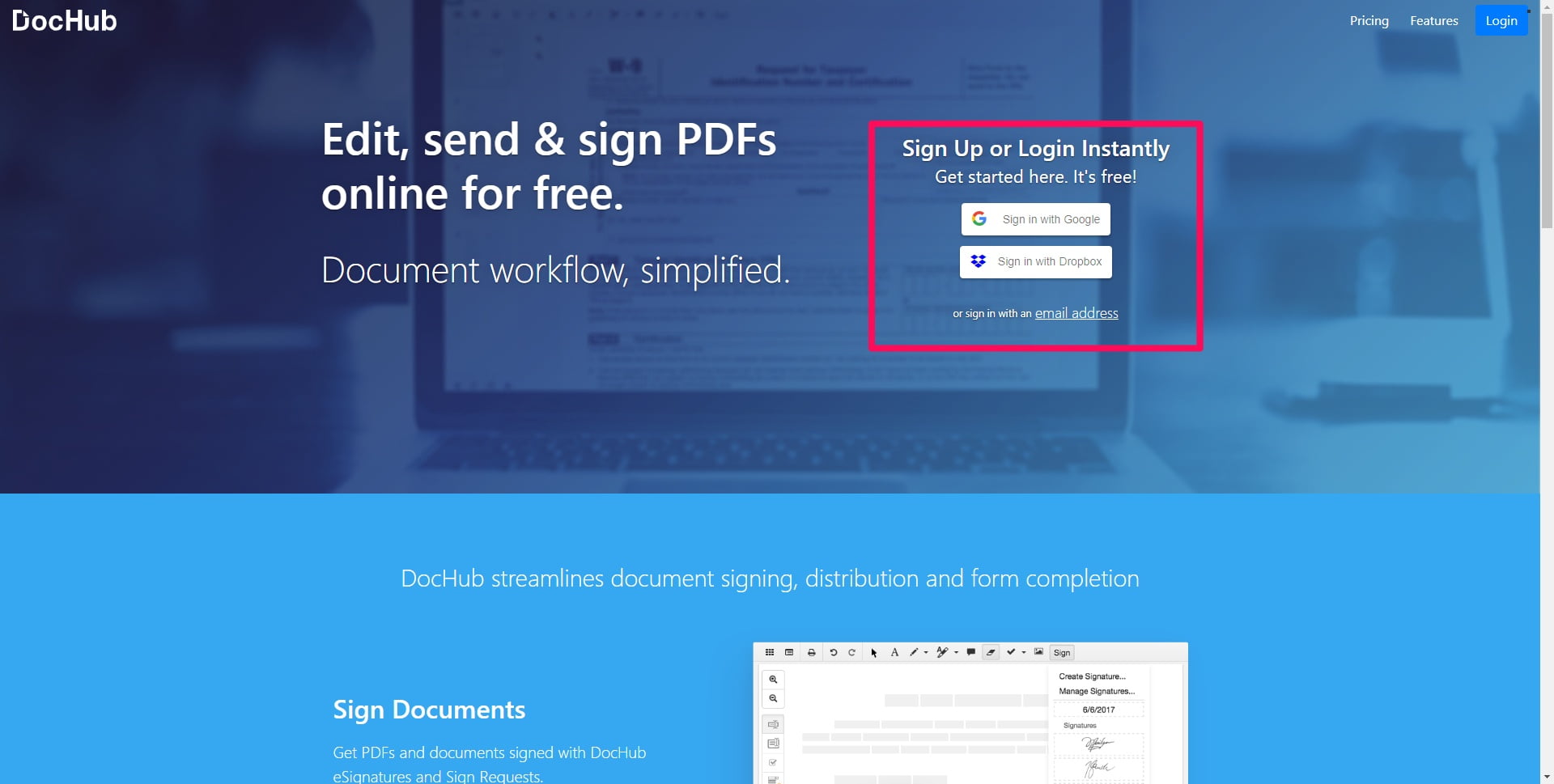
Once you’re logged in, click the green “New” button on the left sidebar and upload your contract. Additionally, you can create a document from scratch.
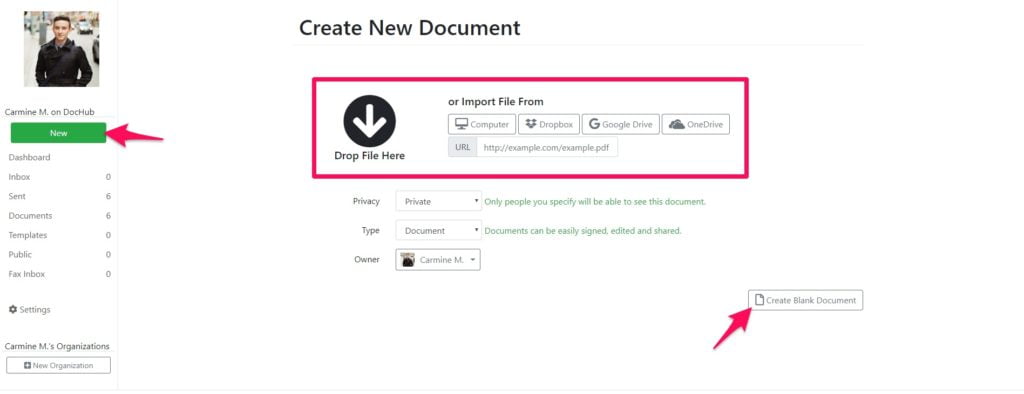
This will bring you to the contract creation page.
Step 2: Create a signature field and assign their email
Click the “Sign” button from the top navigation to add your client as a signer.
Enter their email and select “Manage fields” afterward.
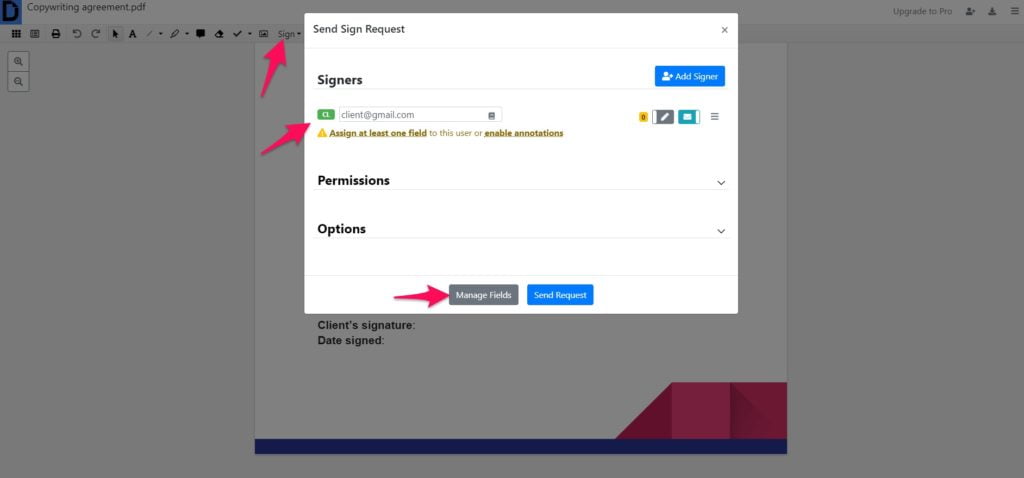
A field is a mandatory area they must fill out which brings me to my next point.
Step 3: Request the client’s signature
The left sidebar will now have new options such as a signature request and date of signing box.
Choose an element and drag it where you wish it to appear on the contract.
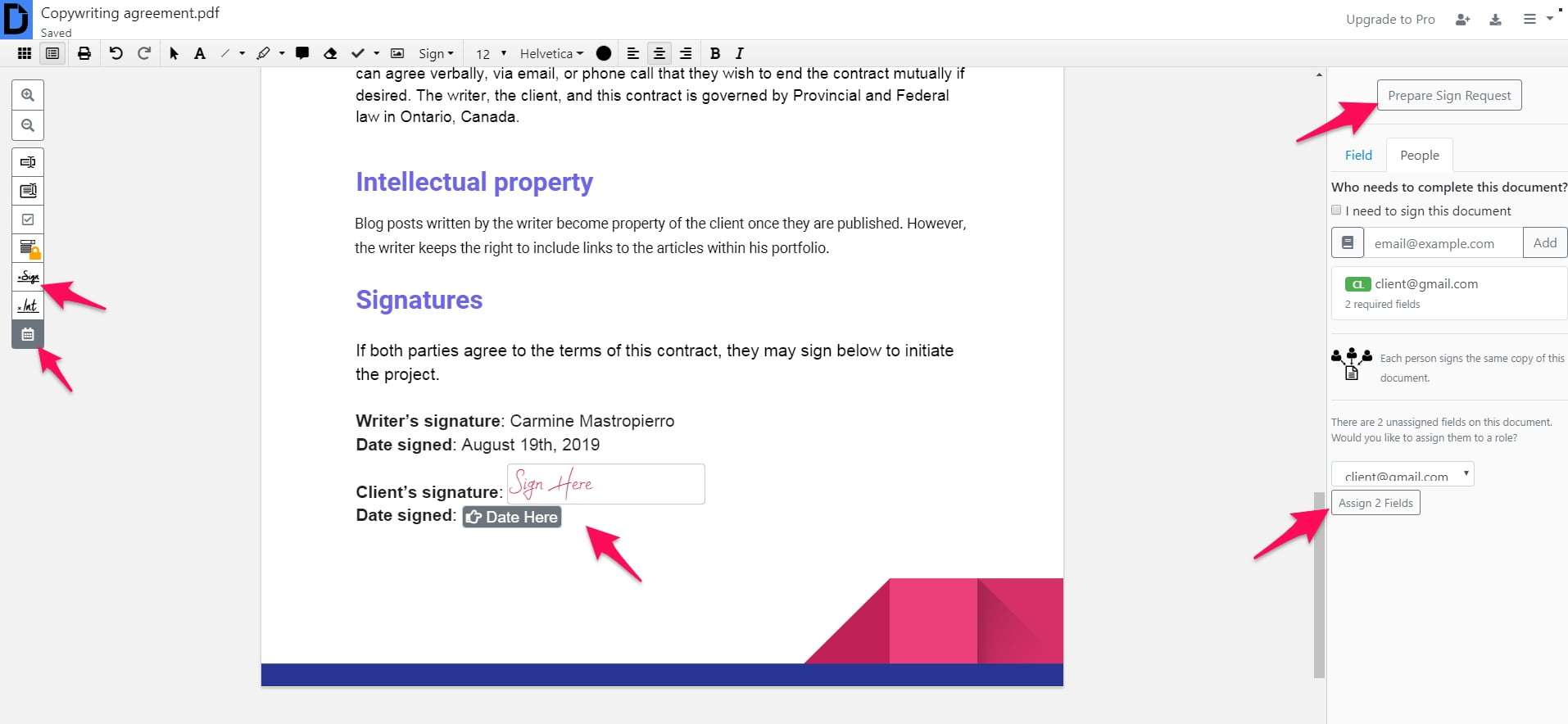
Ensure that you hit the “Assign X fields” button on the right so it applies to the client before finally requesting the signature.
Business proposal tips
Here are some tips to improve the proposal writing process and the final product.
I use these on a daily basis to speed up my workflow and feel less stressed while writing thousands of words.
Edit and proofread thoroughly
If you send out a proposal that you haven’t proofread and edited, it will be riddled with errors and fluff.
This is why the editing process so important in any form of writing.
Go through the first draft of the proposal to ensure that every section flows logically. Every idea should flow into the next one seamlessly.
Remove any fluff, as well. You may have added sentences, paragraphs, or information that later you realize isn’t necessary.
Ensure that the proposal has a single voice and tone throughout the entire document, too.
Give it one final read before sending it off to the client after you’re satisfied.
This is one of the most important steps while preparing a business proposal because it ensures the final product is crisp as toast.
Use visuals
Take advantage of infographics or other visuals in your proposal to demonstrate ideas and points.
These can be screenshots of websites, social media accounts, or analytics that are relevant to your services, for example.
They can be especially useful for agencies that offer web design, logo, or similar services since you can include past projects as benchmarks.
Give my previous article on how to make and market infographics a read on that note.
Use data to back up claims
So, you generated a previous client $500,000 in sales over two months? Prove it.
Numbers talk, which is precisely why you have to back up any claims you make with real data.
This includes screenshots of dashboards, revenue numbers, analytics, etc.
Use these numbers as social proof and an idea of what the client can experience themselves.
Businesses want results at the end of the day. If you can prove that you’ve done good numbers for other companies, they’ll be more likely to work with you.
Final thoughts on how to write a business proposal
A business proposal is the last step before landing a client.
Don’t mess it up.
You don’t want to spend all of that time prospecting and nurturing a lead, only to drop the ball at the last second.
Apply today’s main takeaways and you should see proposals converting at a much higher rate.
- Use a graphic design tool like Canva to make an impressive business proposal cover page.
- Write a cover letter that explains who you are, what you do, and what problem you will solve for the client.
- Add a hyperlinked table of contents to help making the proposal easier.
- Create an executive summary that encapsulates the goal of the project in a professional manner.
- Have a section for pricing that you angle as an investment. Include packages and plans to choose from if possible.
- The proposal itself needs to clearly outline the steps you will take to solve the client’s problem and estimated results.



